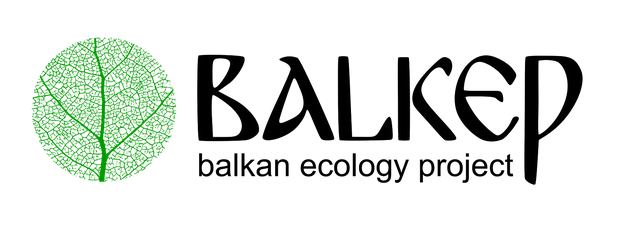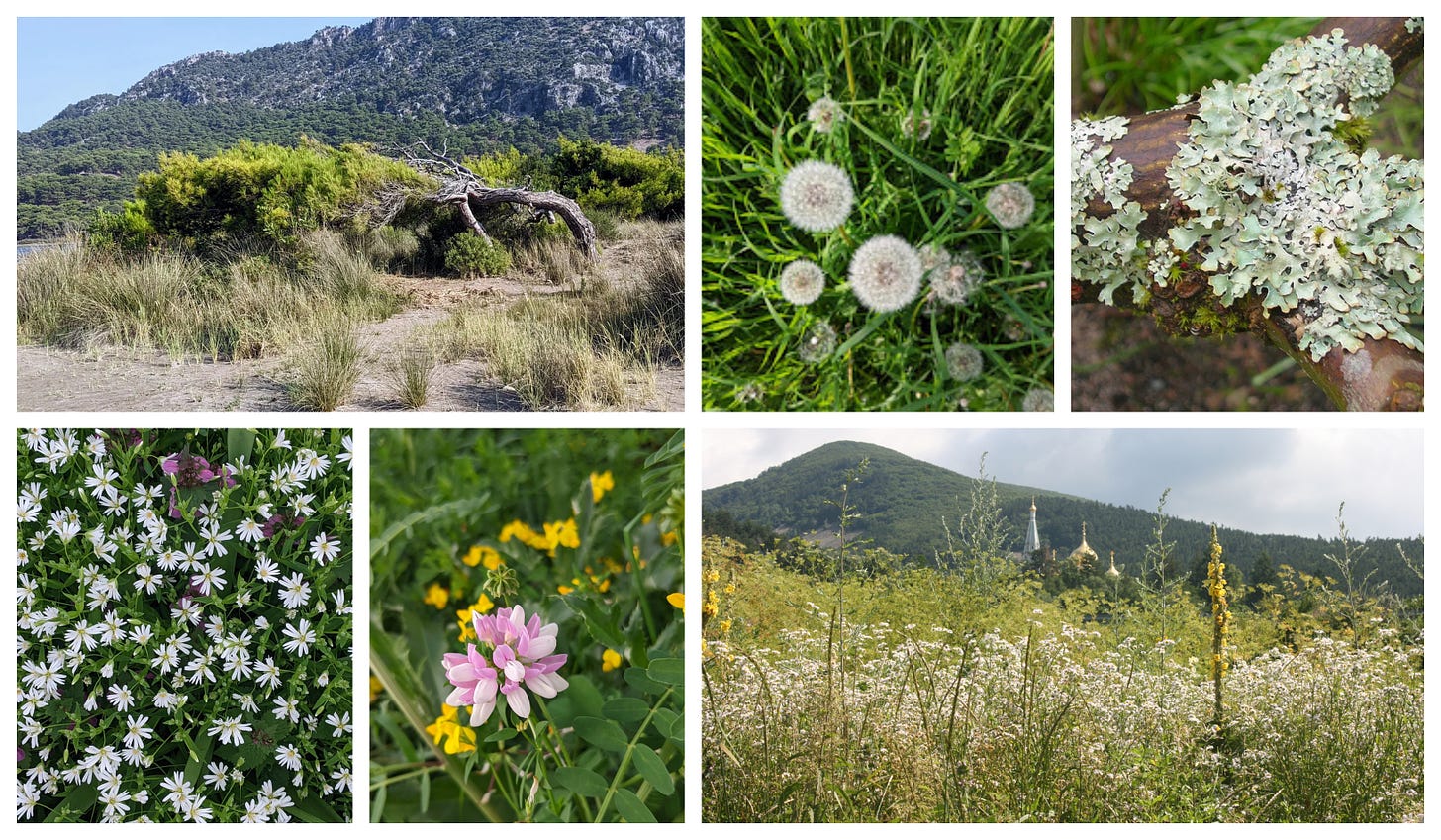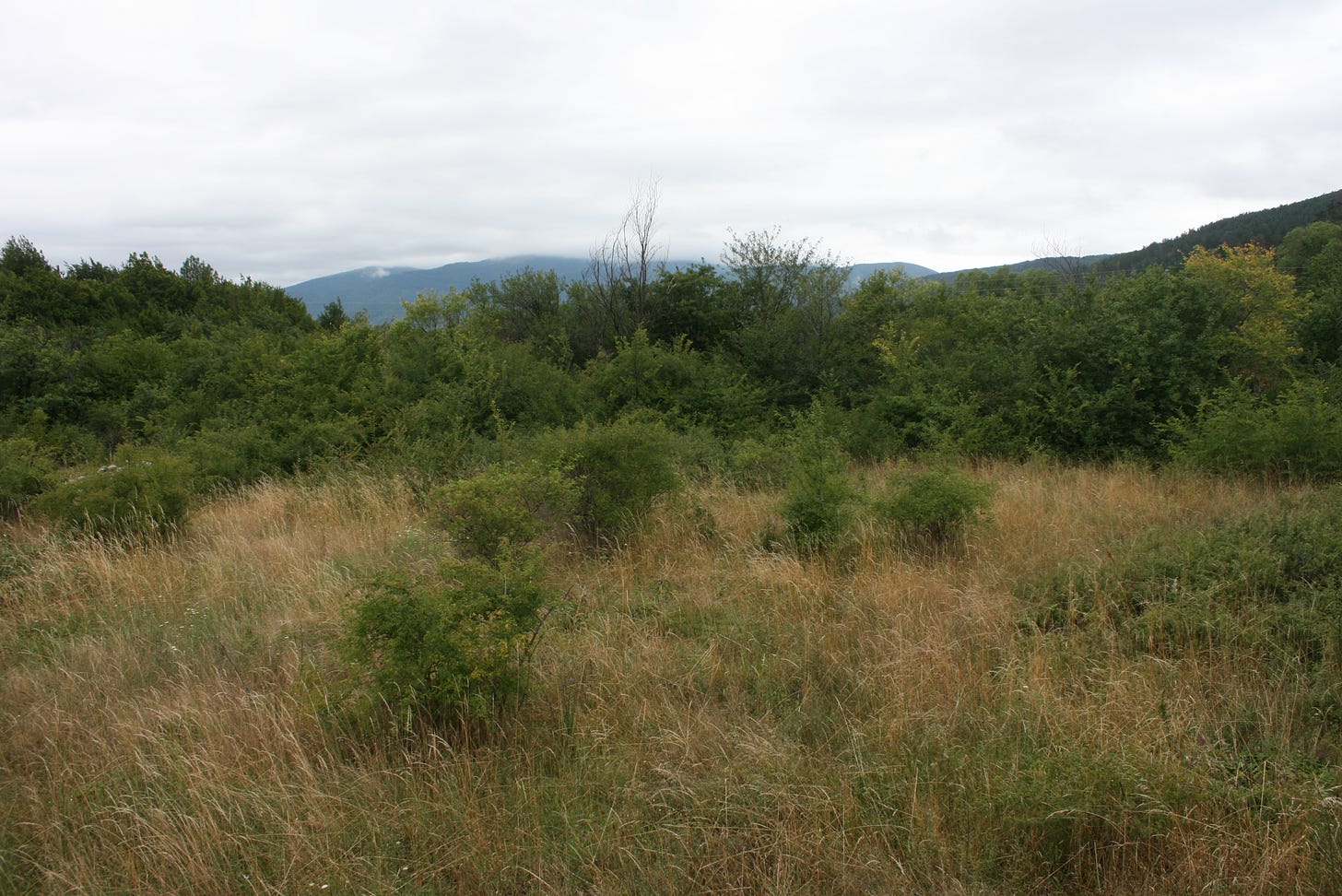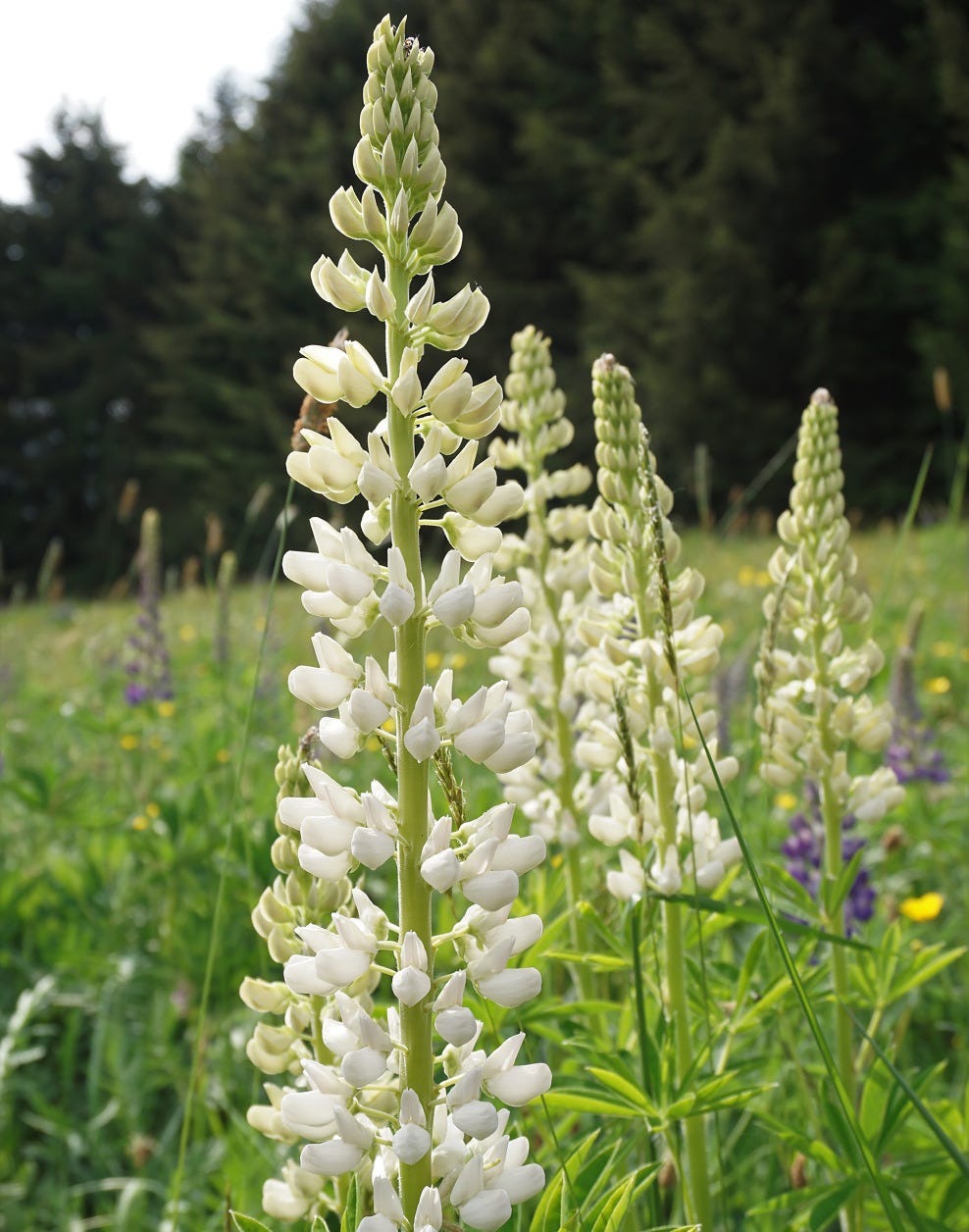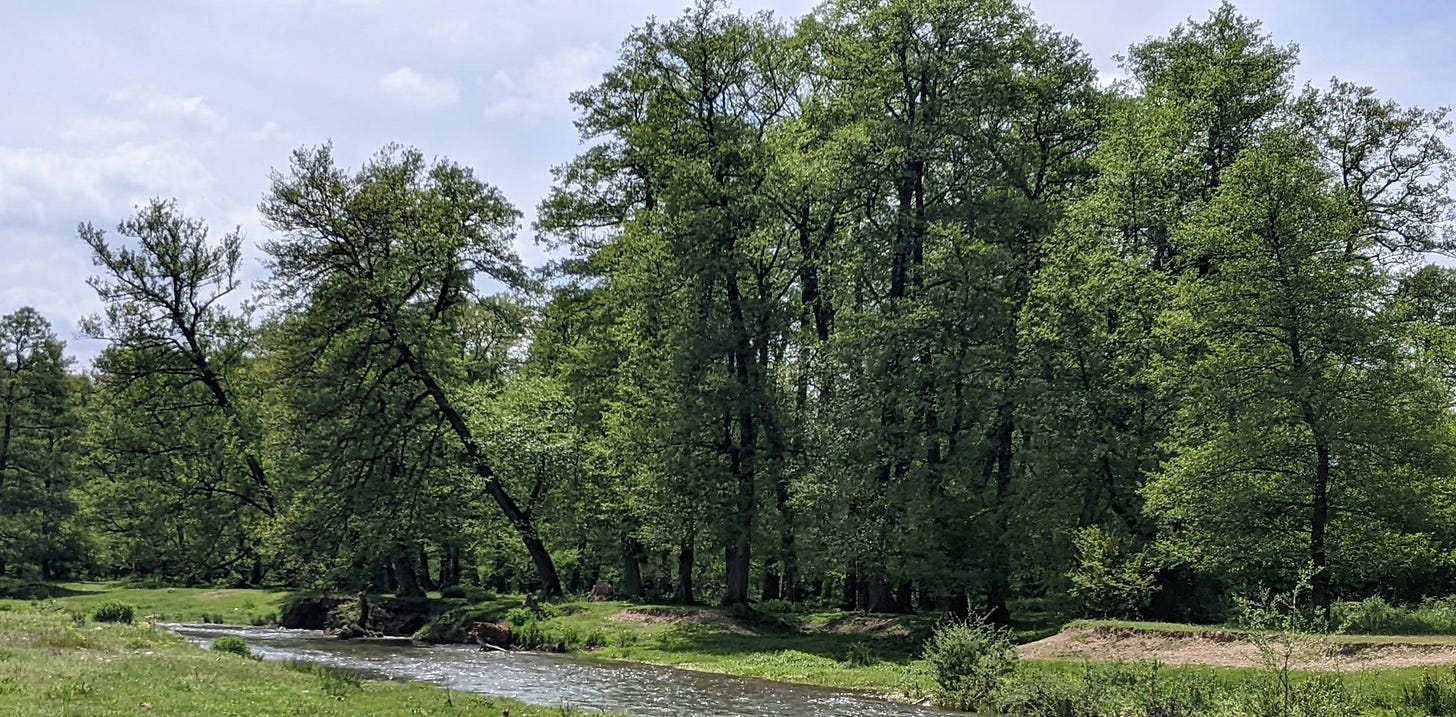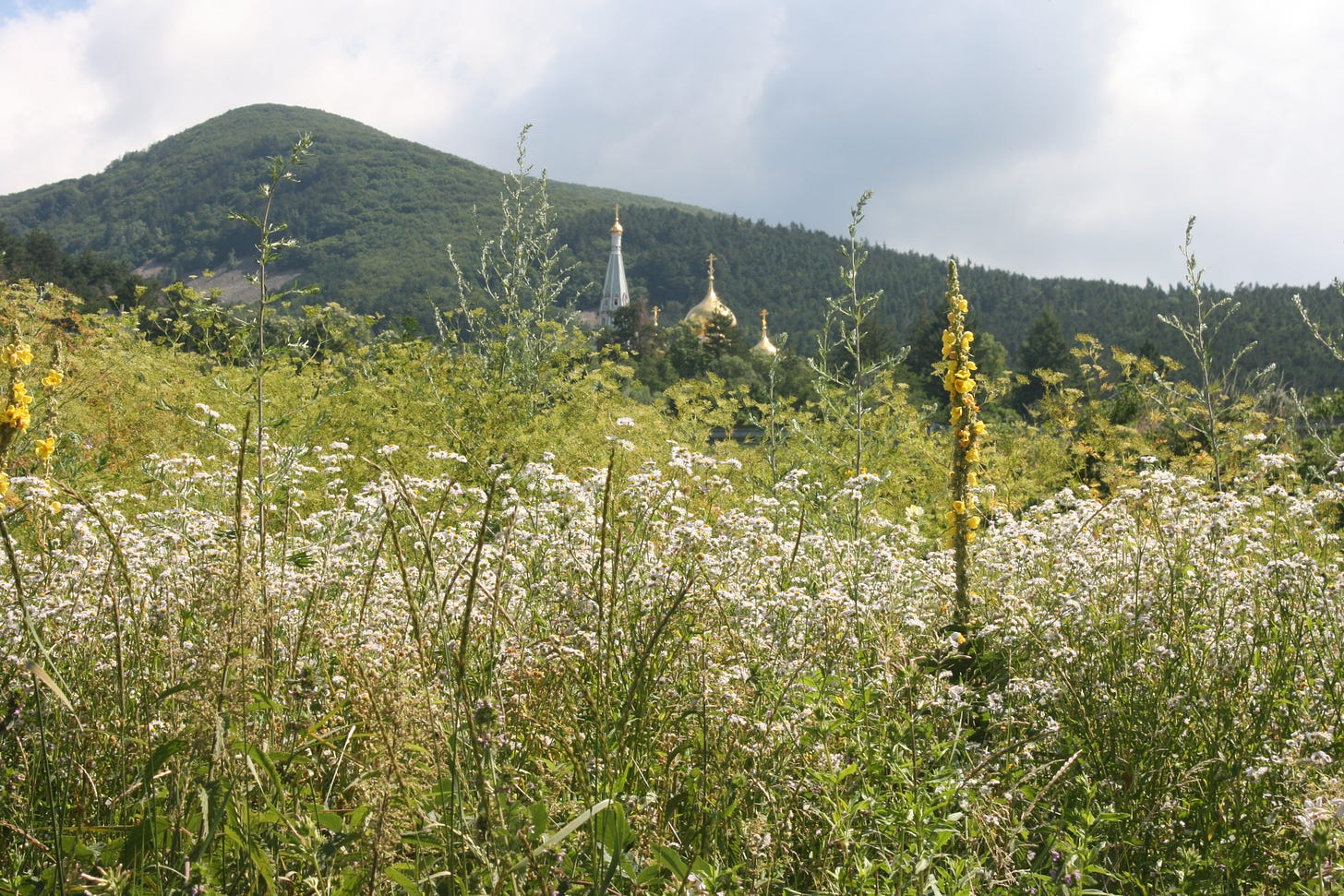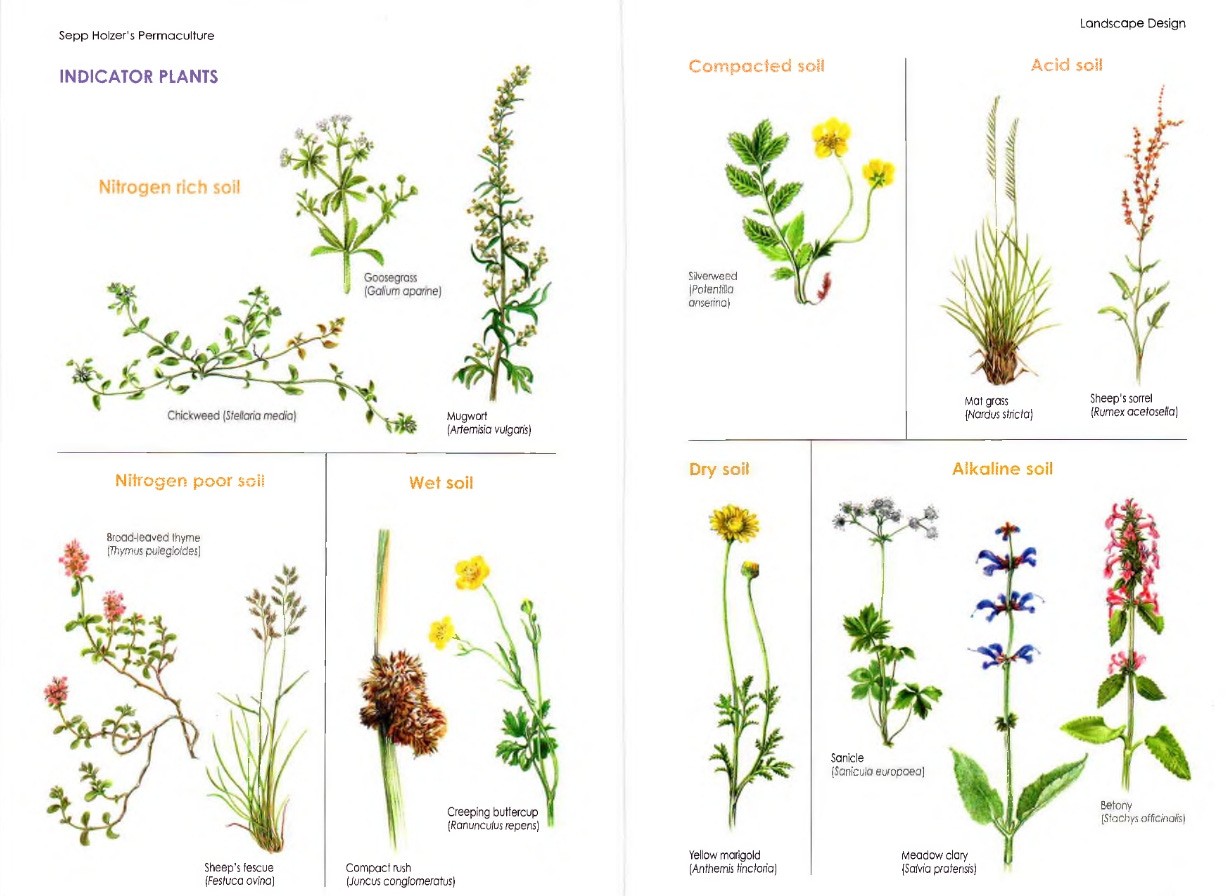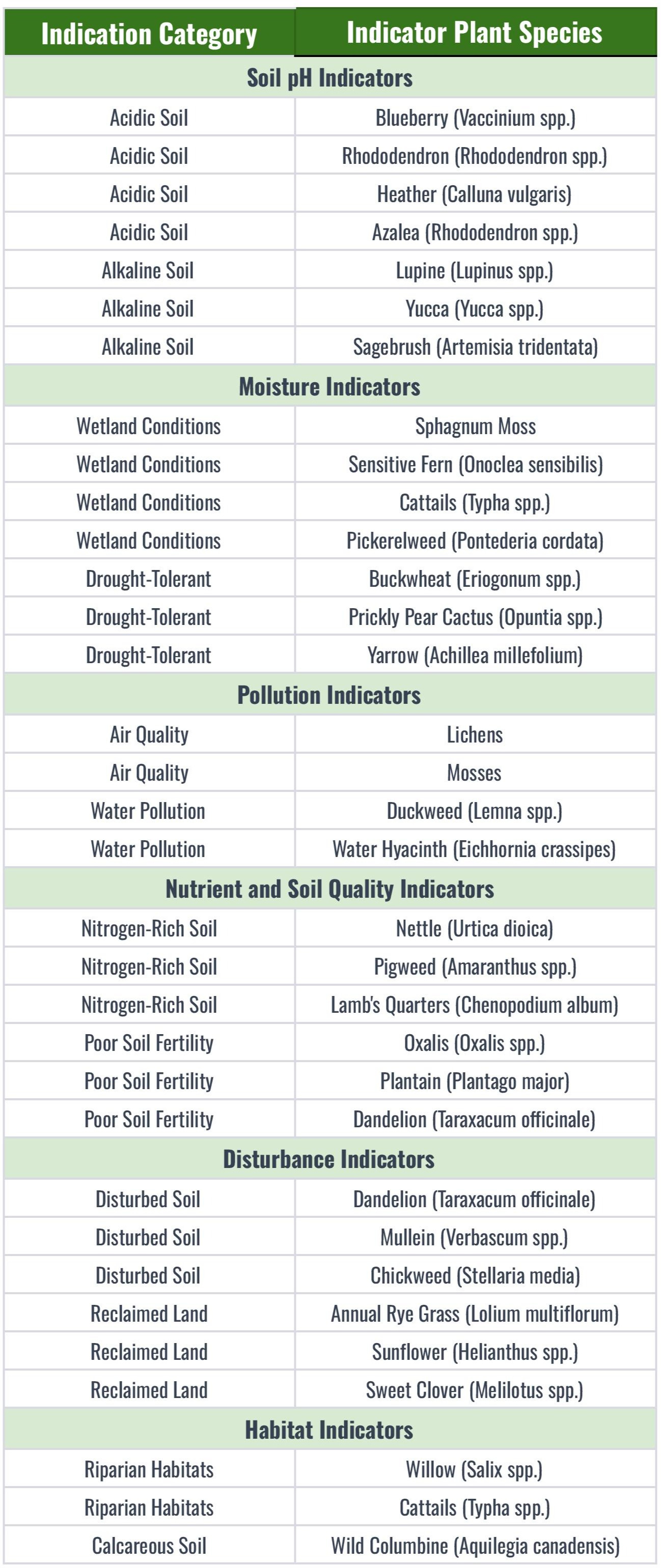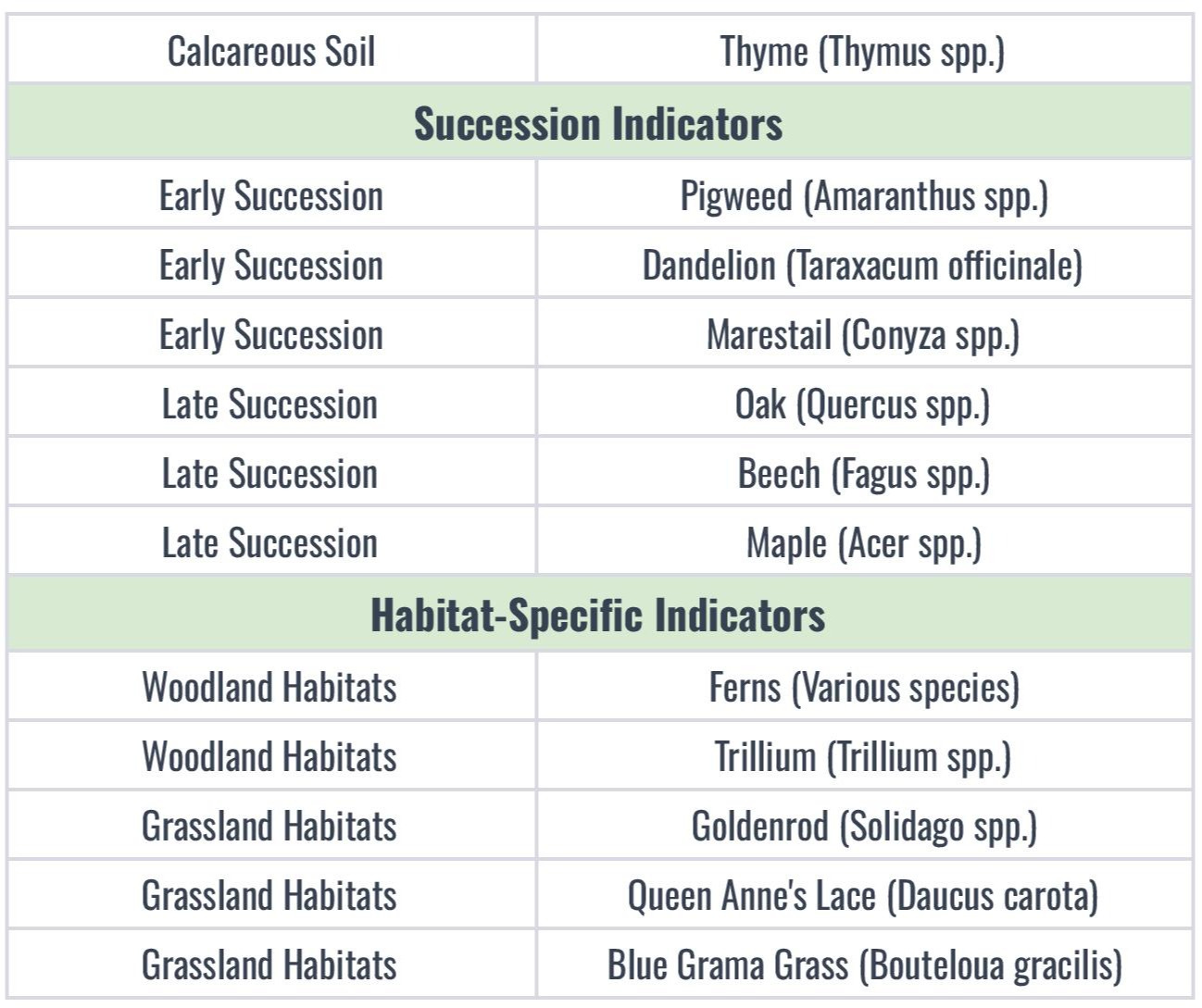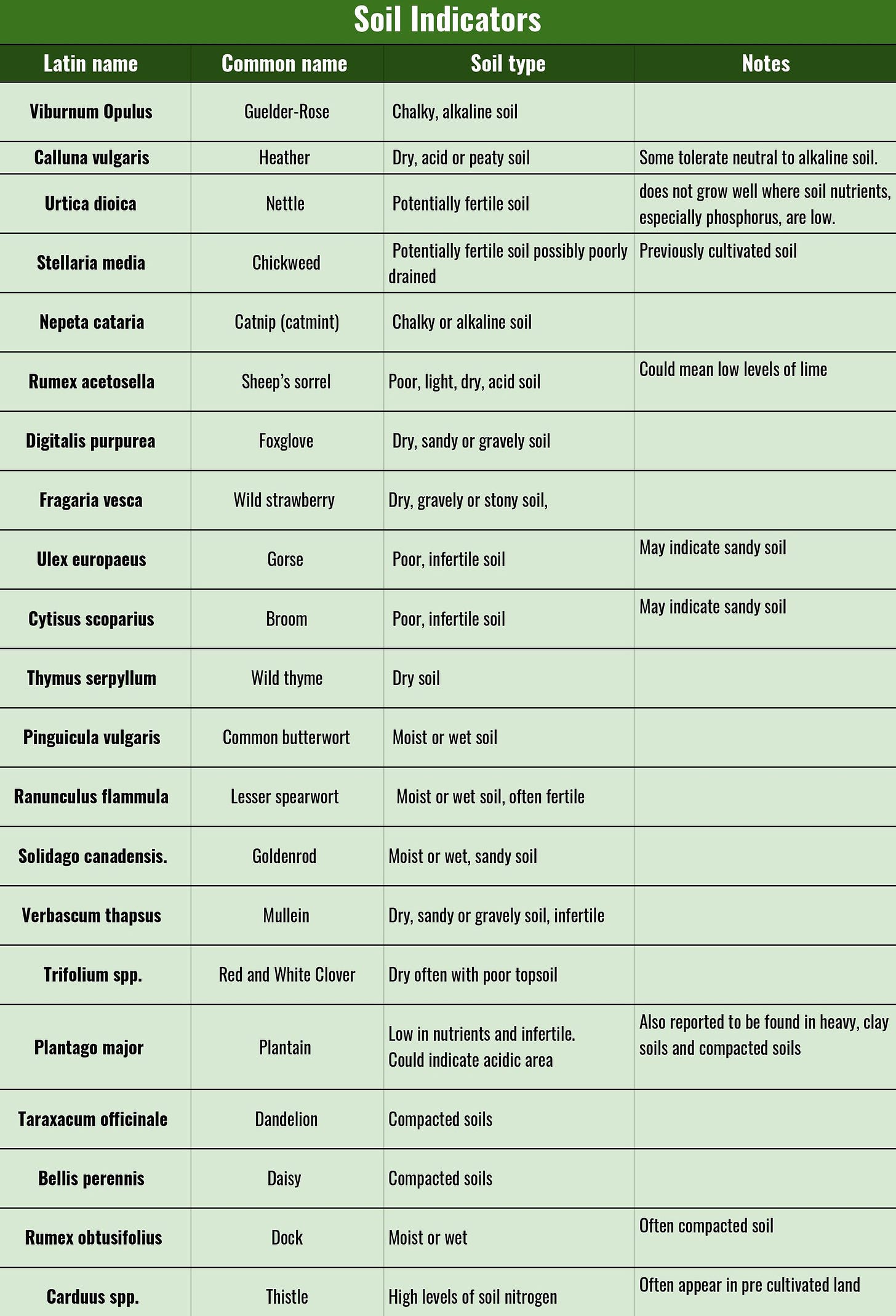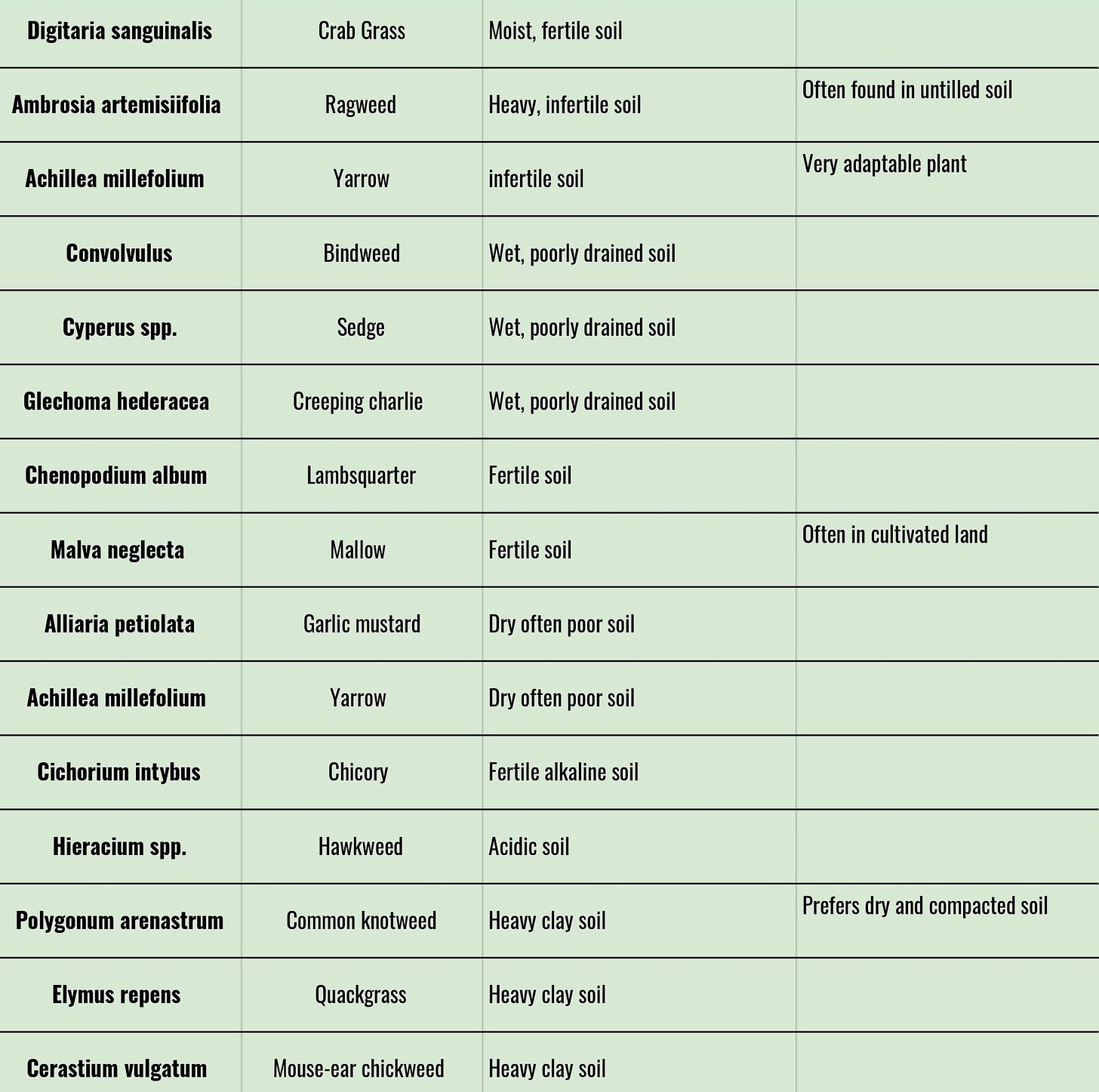Nature has its own language, and if you know how to read it, you can uncover valuable insights about the soil and environmental conditions of a place. Certain plants serve as reliable indicators, offering clues about soil type, pH levels, fertility, and even the history of a location. From the moisture-loving mosses to the acidic-soil-loving ferns, these silent messengers can reveal secrets hidden beneath the surface. But their language extends beyond soil – plants can also narrate stories about prevailing winds, herbivore presence, pollution levels, and habitat health. During this post we’ll explore the fascinating categories of indicator plants and look at a few of the species in each category.
Let’s start by looking at how plant form can signal environmental factors at work. For example, if there are trees on a site with lopsided crowns as in the photo below, it’s a clear indicator of potentially damaging prevailing winds that are killing the buds exposed to the initial force of wind, hence the tree grows one-sided.

The small bushy shrubs in the below image are an indicator that herbivorous mammals frequent the area. The bushy form is the result of the herbaceous tips of the plants being grazed by the mammals, with the removal of the apical buds promoting growth of the buds lower down the stem. This type of habitat, i.e. grasses with some low bushy shrubs, is often an indicator of abandoned agricultural land. If left alone it will eventually revert to woodland.
Indicator Plant Categories
Indicator plants can also be categorized based on the types of environmental conditions they indicate. Here's a breakdown of these indication categories:
1. Soil pH Indicators:
Acidic Soil Indicator Plants: These plants thrive in soils with low pH levels (acidic conditions), typically below 6. Examples include blueberry (Vaccinium spp.), rhododendron (Rhododendron spp.).
Alkaline Soil Indicator Plants: These plants prefer soils with high pH levels (alkaline or basic conditions), often above 7. Examples include lupine (Lupinus spp.), yucca (Yucca spp.).
2. Moisture Indicators:
Wetland Indicator Plants: Plants that indicate wet or waterlogged conditions, such as sphagnum moss and sensitive fern (Onoclea sensibilis).
Drought-Tolerant Indicator Plants: Plants that thrive in dry conditions, often found in arid regions or well-drained soils, like buckwheat (Eriogonum spp.).
3. Pollution Indicators:
Air Quality Indicator Plants: Lichens are sensitive to air pollutants like sulfur dioxide and heavy metals, indicating air quality and pollution levels.
Water Pollution Indicator Plants: Aquatic plants like cattails and water hyacinths can indicate water pollution and nutrient contamination.
4. Nutrient and Soil Quality Indicators:
Nitrogen-Rich Soil Indicator Plants: Plants that grow well in nutrient-rich soils, like nettle (Urtica dioica). This is a very reliable indicator.
Poor Soil Fertility Indicator Plants: Plants that can thrive in nutrient-depleted soils, like Clover (Trifolium spp.).
5. Disturbance Indicators:
Disturbed Soil Indicator Plants: Plants that colonize disturbed or compacted soils, such as dandelion (Taraxacum officinale) and mullein (Verbascum spp.).
Reclaimed Land Indicator Plants: Species that appear after land disturbances, often indicating the restoration process.
6. Habitat Indicators:
Riparian Indicator Plants: Plants that grow in areas near water bodies, indicating wet or riparian habitats, like Alder (Alnus glutinosa).
Calcareous Soil Indicator Plants: Plants that indicate limestone-rich or calcareous soils, like wild columbine (Aquilegia canadensis).
7. Succession Indicators:
Early Succession Indicator Plants: Species that appear in disturbed or open areas during early stages of ecological succession.
Late Succession Indicator Plants: Species that become dominant as ecosystems mature and transition towards climax communities.
8. Habitat-Specific Indicators:
Woodland Indicator Plants: Plants that prefer forested environments and indicate well-drained, shaded soils.
Grassland Indicator Plants: Plants that thrive in open grasslands, often indicating sunlight exposure.
Regenerative Landscape Design - Online Interactive Course
Want to learn how to design, build and manage regenerative landscapes? Join us on our Regenerative Landscape Design - Online Interactive Course. We look forward to providing you with the confidence, inspiration, and opportunity to design, build and manage regenerative landscapes, gardens, and farms that produce food and other resources for humans while enhancing biodiversity.
You can find the course details here and at the moment we have a $300 ( 20%) discount for full enrollment to the course. Just use RLD2024 in the promo code section of the registration form to receive your discount.
Here is a list of some common species from each category.
Using plants as soil indicators works better in the wild or on neglected land than it does in an established garden because many of the plants that can signal conditions will grow perfectly well on good soils as well as compacted, acidic, alkaline, dry or low/high fertility soils. However, if you find one of the indicator species listed below growing as the dominant species in a given area, it’s more likely they are indicating a certain soil condition. The plants that indicate fertility and acidity are probably the most reliable indicators.
The below table lists some of the most common soil indicator plants along with some notes
Support Our Project
If you appreciate the work we are doing you can show your support in several ways.
Become a member of the Bloom Room. A $70 annual or $7 per month subscription to our Substack provides you with access to live sessions, design tutorials, a members forum and more, see details here.
Make a purchase of plants or seeds from our Nursery or Online Store
Joining us for one of our Practical Courses or Online Courses
Comment, like, and share our content on social media.
If you appreciate the work we are doing you can show your support in several ways.
Become a member of the Bloom Room. A $70 annual or $7 per month subscription to our Substack provides you with access to live sessions, design tutorials, a members forum and more, see details here.
Make a purchase of plants or seeds from our Nursery or Online Store
Joining us for one of our Practical Courses or Online Courses
Comment, like, and share our content on social media.
We offer a diversity of plants and seeds for permaculture, forest gardens, and regenerative landscapes including a range of fruit and nut cultivars. We Deliver all over Europe from Nov - March. - Give a happy plant a happy home :)

Want to learn more about Regenerative Landscape Design? Join The Bloom Room!
The Bloom Room is designed to create a space for more in-depth learning, for sharing projects and ideas, for seeking advice and discovering opportunities.
Ultimately, it aims to build a more intimate, interactive, and actionable relationship between members, a way for the Bloom Room community to support each other’s projects and learning journeys, and to encourage and facilitate the design, build, and management of more regenerative landscapes across our planet.
What you can expect as a member of the Bloom Room
As a member of the Bloom Room you can expect;
Access to an interactive forum where you can ask questions, direct what type of content you would like to see as well as share your own content and projects.
Monthly live session featuring general Q&A and tutorials on design software for creating and presenting polycultures.
Live session every month for members to showcase your projects, plans, designs, and gardens, with guest speakers from the community.
Full Access to all of the content on Substack
A 50% discounts on all of our online courses
Future opportunities to join our Global Regenerative Landscape Design and Consultancy Service, with potential roles for those with the will and skill to join our design team.
An opportunity to take part in the group ownership of a Regenerative Landscape. You will find more details on that here.
Become a paid subscriber to our Substack to join. The annual subscription is currently $70 and the monthly subscription is $7 (monthly subscription excludes discounts for products and services) . You can join here, we look forward to meeting you!
